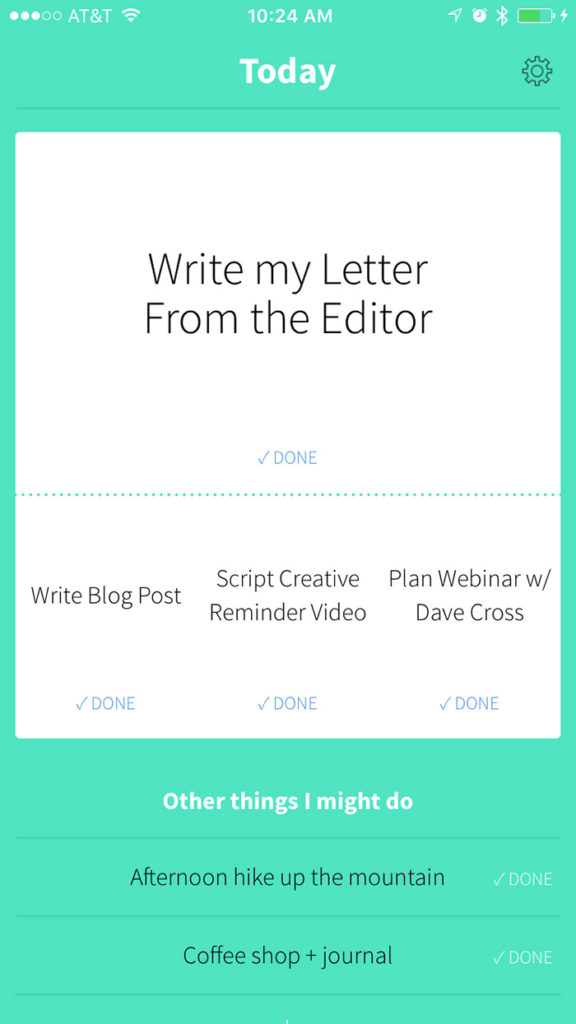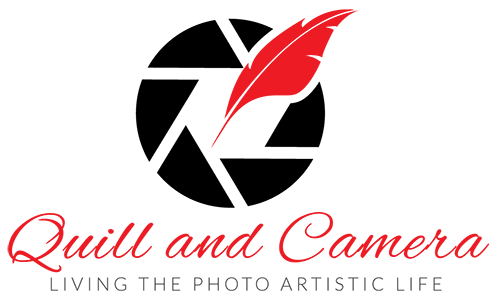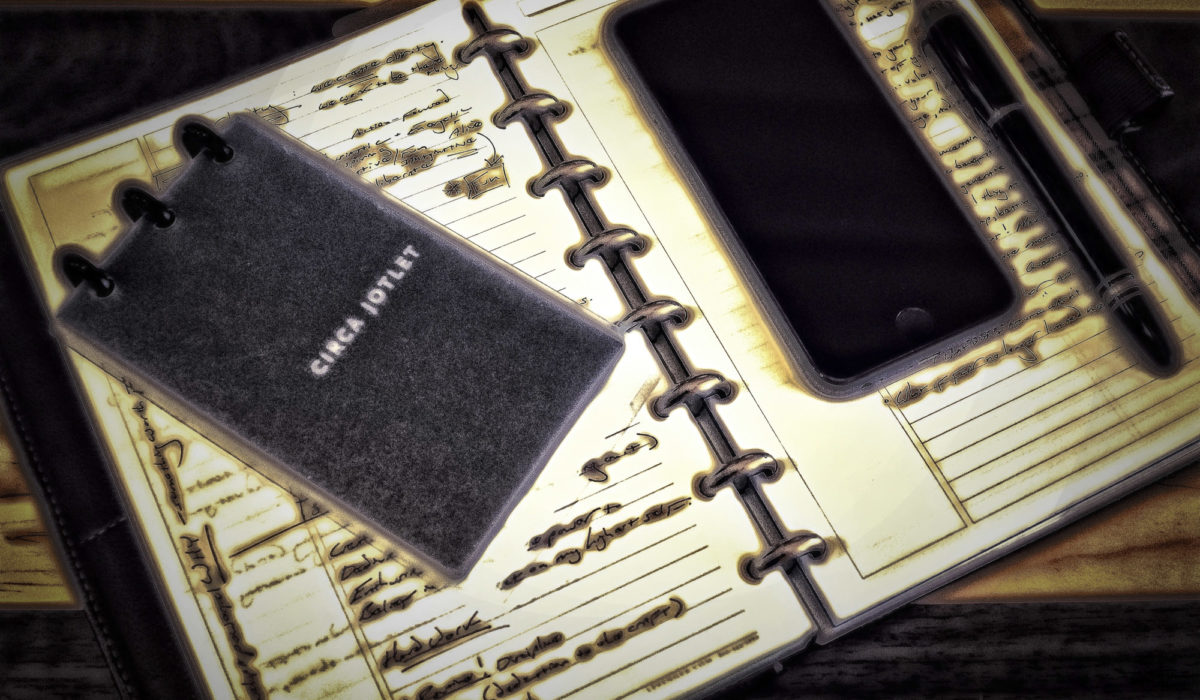— “The main thing is to keep the main thing the main thing.” – Stephen Covey.
I think it was around my second cup of coffee and over 45 minutes into my 200 mile per hour dissertation on everything I had mapped, drafted, and planned out in my notebooks (all color-coded, with diagrams no less!) when the friend I was sharing all this with couldn’t take it anymore and broke in on me:
“Stop. Jeeee-sus . . . Just shut the hell up.”
You can imagine how that left me blinking and taken aback.
So did the expression on his face.
I mean, I had been rattling on for nearly an hour thinking he must be as enthralled in my elaborate plans as I was … and instead he was looking at me with dreary exhaustion.
Best guess, he had stopped actually hearing what I was saying about half an hour before finally bringing me to a halt and telling to shut my trap.
But the next thing he said to me changed my life forever. And it was just this:
“So, OK. That’s a lotta talk. But show me ONE thing you actually DID this week.”
I started to open my mouth but he cut in: “And I mean BESIDES planning it to death.”
Hmmmm. This was a good question. Nothing particular came to mind. So all I could really do was laugh.
Of course, I now know full well why I was so addicted to over-planning everything. It was because all that endless planning let me get away with living in a dream world where everything I wanted to create and accomplish was (conveniently) just around the next corner.
And let’s face it, by forever noodling around like that, I was able to put off the actual WORK it was going to require to get anything done.
And I suppose more to the point, by planning endlessly I was able to put off the risk of failing.
Way easier to have lots of big ideas and spend my time feeling important because of them … than to actually sit down and do the work and put it out into the world.
My Obsession With Lists (and the 3 Revolutionary Insights That Changed How I Run My Life)
The first thing my friend had me do was open my journal to a fresh page and make a list.
But a different sort of list. Which I’ll explain in a moment.
Now, let me say up front, I’ve been a list-maker my whole life. And I think the habit has served me well. Rather than get caught up and overwhelmed with everything needing to be done, I can usually sit down with a pen and paper and bring some order to it all, figure out what goes where and what needs to happen next.
Not to say I’ve always been GOOD at using lists. For a long while (most of my life) I’d end up making largely useless lists of all the things I “needed to do,” and so many of the things I’d write down were either nebulous or so far-reaching you couldn’t actually “DO” them at all (at least not in one sitting, or even in one day, even in a week or a month), so all my lists did was overwhelm me even more. The stuff I would write down would just pile up and make me feel even more behind, my situation even more hopeless.
The first breakthrough I came across concerning lists was the importance of context. Rather than just lump everything into one big list, it makes a lot more sense to chunk it down into blocks (e.g., one list of creative tasks for whatever project I’m working on, a separate list for things I want to get done around the house, a separate list for phone calls I need to make, and so on). Creating lists according to context was a big step forward for me.
Another breakthrough I pulled from Tony Robbins. In his “Time of Your Life” training, he stresses the importance of thinking not in terms of “To Do” lists, but rather in terms of the RESULTS you want to accomplish, and then (equally important) the real PURPOSE behind those results.
When you start to think like this, you don’t just write down “Photoshop” on your list in the morning. Instead, while you might encapsulate it as “Complete my Composition in Photoshop,” you actually think of the RESULT you want to achieve (“Spend a fantastic evening in my studio working in Photoshop to complete the final textures, custom brush work, and post-production on my current composition”) and then you back that up with some thought given to the PURPOSE behind it all (“… so that I can make this the initial piece in the exciting 5-panel project I’m working up to submit to Somerset Digital Studio magazine.”)
The clarity and motivation this brings to your life can’t be overstated. Thinking in terms of actual results and the reasons you want to achieve them is a major shift.
And there’s a hidden benefit to it. Because when you think in terms of the results you want to accomplish rather than blindly following your to-do list, what you’ll find again and again is that you can very often achieve your result without actually crossing off everything on your list! Once you have the result in front of you, and you’ve jazzed it up with some purpose behind it, a little brainstorming will often uncover a faster or more effective way to achieve the same result. Or you might just flat out decide that the result doesn’t much matter after all, and you’ll decide to skip it entirely (or maybe delegate it, handing it off to someone else).
All of a sudden your “To Do List” just got a lot shorter and life feels great.
So that was the second major breakthrough for me. First was learning to plan my lists according to context. The second one was to not blindly make “To Do” lists at all, but rather to think first in terms of the results I want to achieve (in any given project or on any given day) and take a moment to reflect on WHY those results matter.
But it was my friend (remember him? The one who so kindly told me to shut the hell up?) who shared with me the third major revelation that changed how I approached lists (and everything else in my life) forever.
Here’s what he told me:
“Instead of cooking up these huge plans and outlining them ten, twenty, fifty steps out — make a list of just 3 to 5 things you could actually do RIGHT NOW. And then … just circle the ONE thing that would make the biggest difference. One thing. Just one. Something you can do right now. Today. And then just do THAT.”
I took that in.
Seems obvious, right?
But let me tell you. That hit me like a lightning bolt.
Because when you think about it, you really only can do one thing right now. Multi-tasking is a myth. (And to the extent you actually try to multi-task, everything you do suffers.) ALL you can do at any given moment is the one thing you’re doing.
Moreover, in any given project there’s almost always just ONE thing that most needs to be done right now.
And all of our prancing around it is an effort to delay sitting down and just flat out getting it done.
The One Question To Rule Them All
Frodo had one thing he had to do. He had to carry the One Ring into Mordor and cast it into the fires of Mount Doom. That was it.
Our lives tend to be a bit more complicated than that (albeit less harrowing).
But all the same, I’ve come to believe in the power of sitting down to create my one short list each morning, never more than a few things on it, each a specific action I want to take with a clear result and purpose.
This brings tremendous clarity to my days.
And I am convinced the final refinement I brought to this habit has been responsible for all of the most exciting advances I’ve made over the last few years.
Here it is . . .
Instead of asking myself each morning “What do I have to do today?” … I ask:
“What can I CREATE today?”
Big difference.
Not “What’ve I gotta do?” And not even “What am I gonna ‘work on’ today?”
But rather: “What SPECIFIC THING can I CREATE today?”
That question carries real power.
I talk about this at some length in my 21 Days to Creative Abundance course, but for anyone building a creative, artistic life, that should be THE question you ask yourself every morning.
An even better way to phrase it might be:
“What do I GET to CREATE today?”
And if you want a great follow-up question, try this:
“What about creating that is going to be AWESOME?”
Keeping It In Front Of You (Analog vs Digital)
So for me, I start out each day with an assessment of the results I want to work toward. Next I usually sort them into clear blocks of time: stuff I want to work on in the morning, things I want to concentrate on in the afternoon, and whatever I want to assign to the evening. That keeps it simple.
My mornings are the most important time of the day for me when it comes to creative work. That’s when I’m at my creative best. So when I ask myself “What do I get to CREATE today?” — whatever I decide upon gets slotted into my morning spot. That’s going to be the ONE THING I’m going to assign the greatest importance that day. Whatever else happens, if that one thing gets done, it’s all golden.
So my ONE thing is always pretty clear and obvious. I start out the day with it. Nothing else happens until I put in at least an hour or two on creating something.
I’m not “getting things done” during this time.
I’m not checking things off of my to-do list.
I’m certainly not monkeying around with emails or Facebook or any of that stuff.
Each day I take up my journal to plan the day and ask myself, “What do I get to CREATE today?” . . . And first thing, soon as I set my journal aside, I get busy creating it.
Not everyone has that luxury of course. But do what you can. And keep it as clear and simple as possible.
Even in my case, there are always a few other things on my main list. Never more than a few though. As I learned, if you limit your list to just two or three main results you want to work toward in a given day, you’ll stop wallowing in overwhelm and actually accomplish something. Maybe you have a small handful of other quick tasks and calls to knock out, and maybe you’ll set aside an hour to hammer through email later in the day, but that’s about it. Keep it simple. Stop trying to stuff a hundred different things into every day. Learn to savor broad margins.
Once you’ve gotten into the habit of simplifying your days and narrowing it all down to a few things you really want to accomplish that day, the next challenge is in keeping that intention in front of you. Especially as the inevitable clutter and confusion swarm in.
Originally I took up the habit of simply writing out a single 3 x 5 index card each morning. I’d write down my top two or three results at top left, a few other optional things at top right, maybe a short list of phone calls at lower right. Then I’d fold the card in half, and that would be my play book for the day.
The challenge I ran into was that I was always stuffing the card in my pocket and forgetting it there. Or I’d end up using it as a book mark at some point in the day. Or I’d leave it sitting beside my computer when I headed out to the coffee shop.
And out of sight, out of mind. Before you know it, you’re off task, and an hour or two have gone by and you’ve made no progress on the most important things you wanted to get done that day. And relying on my memory to keep track of the card and refer to it just wasn’t working for me. Much as I liked the aesthetics of a single 3 x 5 card written out by hand, ultimately I decided I needed a better solution.
Then I had a realization: I never seem to forget my phone. I certainly don’t use it as a bookmark.
Thankfully, I’m not addicted to checking text messages or email constantly on my phone the way so many seem to be nowadays, but I do check it frequently for other things and often use it as a camera, and like I said, I’ve always got it with me. So it only made sense to switch my 3 x 5 card lists over to my iPhone instead.
And I discovered a great app to fit just what it was I needed.

It’s called (appropriately) “One Big Thing.”
(And it’s even free.)
I’m sure there are all sorts of other apps you could use. Fancier stuff, simpler stuff. Heck, you could just use the note pad app if you wanted.
The main thing is to stick whatever app you choose to employ FRONT AND CENTER, right where you look most frequently, whenever you open your phone. Not tucked away in a folder or on a different screen. Front and center. Where you’ll see it all the time.
What I love about “One Big Thing” is that you literally type in your ONE THING each day, and then you have room below it for up to three other important things … and then below that you can tuck a few less important items you might just want to keep in mind as possibilities that day.
Something that I came up with to make this even more powerful is to make sure to incorporate a VERB in each of the top four items on the page. I want these to be ACTIONS toward a particular result I want to bring about or make progress toward.
What you don’t want to do is just put a vague word in there that could encompass all sorts of different things.
For instance, I don’t ever just write “Blog.” That’s too vague. There are a hundred things I could do on my blog. Just writing “Blog” immediately feels overwhelming. But if I start with a verb and think of the result I’m after … and write instead “Outline a Blog Post” — now it’s something specific I can actually DO. Another day maybe I write “Compile an Artist Showcase for Blog” and on another day “Complete My Video Blog Post.” Each of these is clear and delimited with a solid result I can work toward.
Another tip here. Try to reserve those top four spots for important stuff. And they should be things that take more than a few minutes. Don’t put “Do Laundry” up there. The top four spots should really mean something.
So Give This a Try
Whether you go analog (Moleskine notebook, a simple 3 x 5 note card) or go digital with an app like “One Big Thing,” I encourage you to give this new habit a try in your own life.
Set an alarm in your phone to remind you to make this list each morning, and maybe another alarm to remind you to check in on it again each afternoon, but stick with it for at least two weeks and see what it does for your creativity and your peace of mind.
I think you’ll find the results quite profound.
– Sebastian

